The Bold Blueprint for Customer Service Excellence in 2026

Kasturi Goswami
October 14, 2024
26 min

Table of Contents
“Are my customers’ expectations of my business changing?”
How many times have you caught yourself asking this exact question?
To test out these uncertain waters, you need a little imagination. No, it is not about your childhood imaginary friend, Wesley. It is a situation where you put yourself in the shoes of your customer.
Now, if you can blindly trust yourself to be served with swift and careful attention by your business, you can pat yourself on the back. You are doing a wonderful job. But, if you have doubts, let me tell you they are valid, and your customer service excellence scene needs your attention.
Do not fret, for you are not alone. Companies with good reputations fall prey to the sparkle of vagueness in good service and happy customers. But rarely do they fully comprehend what makes customer service excellence much more than a badge of honor.
A Salesforce survey revealed that 80% of customers consider the experience a company provides to be as important as its products and services. The stat hits home. Only good service builds a positive trust image in your customers’ minds. But achieving an appreciable level of customer service excellence isn’t just about being polite.
Say in the coming months, you not only solve problems for your customers but also surprise them with solutions they didn’t even know they needed. You learn that customer service excellence is about creating systems, utilizing cutting-edge technology, and, above all, making your customers feel like they are truly at the center of everything you do.

Why is Customer Service Excellence the new Differentiator?
Customers prefer companies that are known to deliver good service. Most of them will likely convert to loyal brand advocates when served right. In 2006, Bain and Company did a study revealing that companies have bigger portions of their marketing budget allotted to retaining customers than creating new ones. This indicates that retention faces more friction. Today, in 2026, this can never be more true.
Forbes found that increasing customer retention by just 5% can lead to a profit increase of up to 95%. Imagine what such a boost could mean for your business growth. Whether it’s reducing churn, fostering loyalty, or turning customers into brand advocates, the impact of great customer service is undeniable.
Once a person becomes a customer, the relationship between both parties becomes deeper and more substantial. Retention is all about keeping the connection alive through constant, meaningful efforts, i.e., customer service excellence.
Salesforce surveyed 14,300 consumers and business buyers globally and found that 75% have recommended a company based on excellent customer service. If you rewrite the script and offer something unforgettable, your brand becomes a talking point.
Moreover, believe it or not, companies with higher customer satisfaction scores often see a corresponding rise in employee happiness. Satisfied customers make employees’ jobs easier, and happier employees deliver better service—a virtuous cycle.

For numbers don’t lie–stats that prove customer service excellence is king
Still not convinced? Let us look at some cold, hard facts:
- 68% of consumers say they are willing to pay more for products and services from a brand that offers good customer service experiences (HubSpot)
- 67% of consumers cite bad experiences as the reason for churn (ThinkJar)
- 88% of customers think customer service is more important than ever and can cost companies greatly if ignored in 2026 (Forbes)
- After more than one bad experience, around 80% of consumers say they would rather do business with a competitor (Zendesk)
- 72% of consumers will share a positive experience with 6 or more people, while 13% will share a negative experience with 15 or more (ThinkJar)
- 77% of customers will forgive a bad experience if they rate the service team as “very good” (Qualtrics XM Institute)
These statistics point to one simple truth: customer service excellence doesn’t just improve satisfaction. It forges genuine customer relationships and saves and makes you money.
Why should CCOs and CMOs care about customer service excellence?
Playing an important decision-maker role comes with a lot of responsibilities. You, getting caught up in revenue growth, operational efficiency, or product innovation, is not unpredictable. However, you, at the small end of the stick, should be willing to open your eyes to the truth that every customer interaction is a make-or-break moment for your brand.
It is not just about your product or service anymore. It is about how you make people feel when they buy it, use it, or need support afterward. In 2018, research giant Gartner carried out a customer experience marketing survey to conclude that soon, a staggering 81% of companies are expected to compete mostly or completely based on customer experience.
As the CCO (Chief Customer Officer) or CMO (Chief Marketing Officer) of your business, customer service excellence should be the roadmap you need to stay ahead. The question is no longer, “Are we providing good service?” but, “Are we providing service that keeps us competitive?”
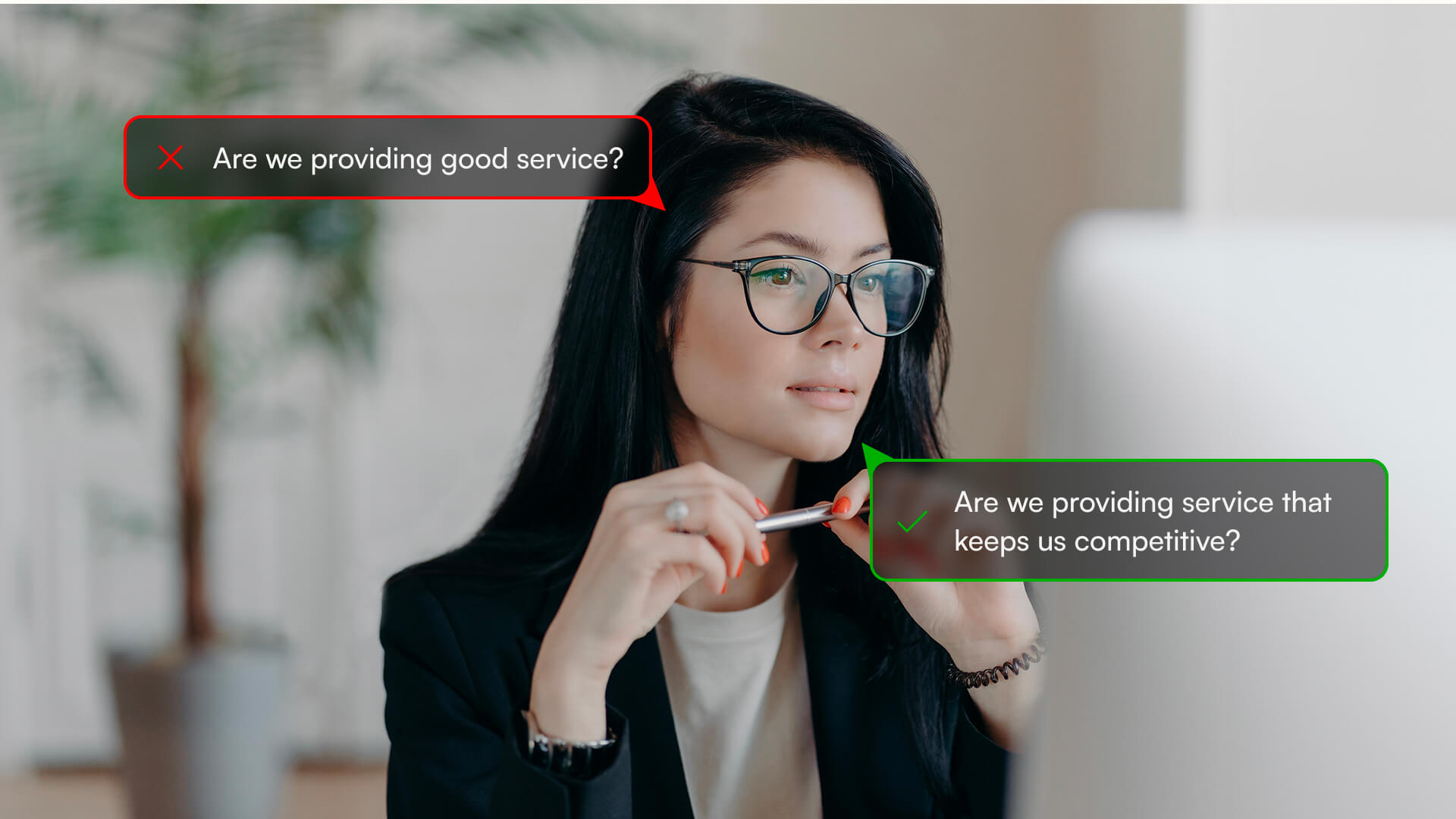
Key Drivers of Customer Service Excellence in 2026
As we move further into 2026, it is important to remember that customer service is a new ballgame. We are speaking of a mix of high-tech solutions and good old-fashioned human touch, changing the game for businesses everywhere. Here are some key drivers of excellence this year:
1. Getting personal: why tailored service wins
Think about your email this morning. You received one addressing you with your first name, but it felt utterly generic. Now, think about an airline that upgraded you because they noticed your frequent work trips or a restaurant you like that remembered your favorite dish.
Customers can spot cookie-cutter responses from a mile away. Gone are the days of one-size-fits-all solutions. It is as outdated as dial-up internet. Customers prefer interactions that feel unique and offer value. They expect you to know them, understand their needs, and tailor your service accordingly. This shift is not just a trend; it’s a hallmark of customer service excellence.
According to Epsilon, when brands offer personalized experiences, 80% of consumers are more likely to make a purchase. Personalization is no longer a luxury; it is a necessity, an expectation of customer service excellence. And companies that meet or exceed this expectation stand out in a crowded market.
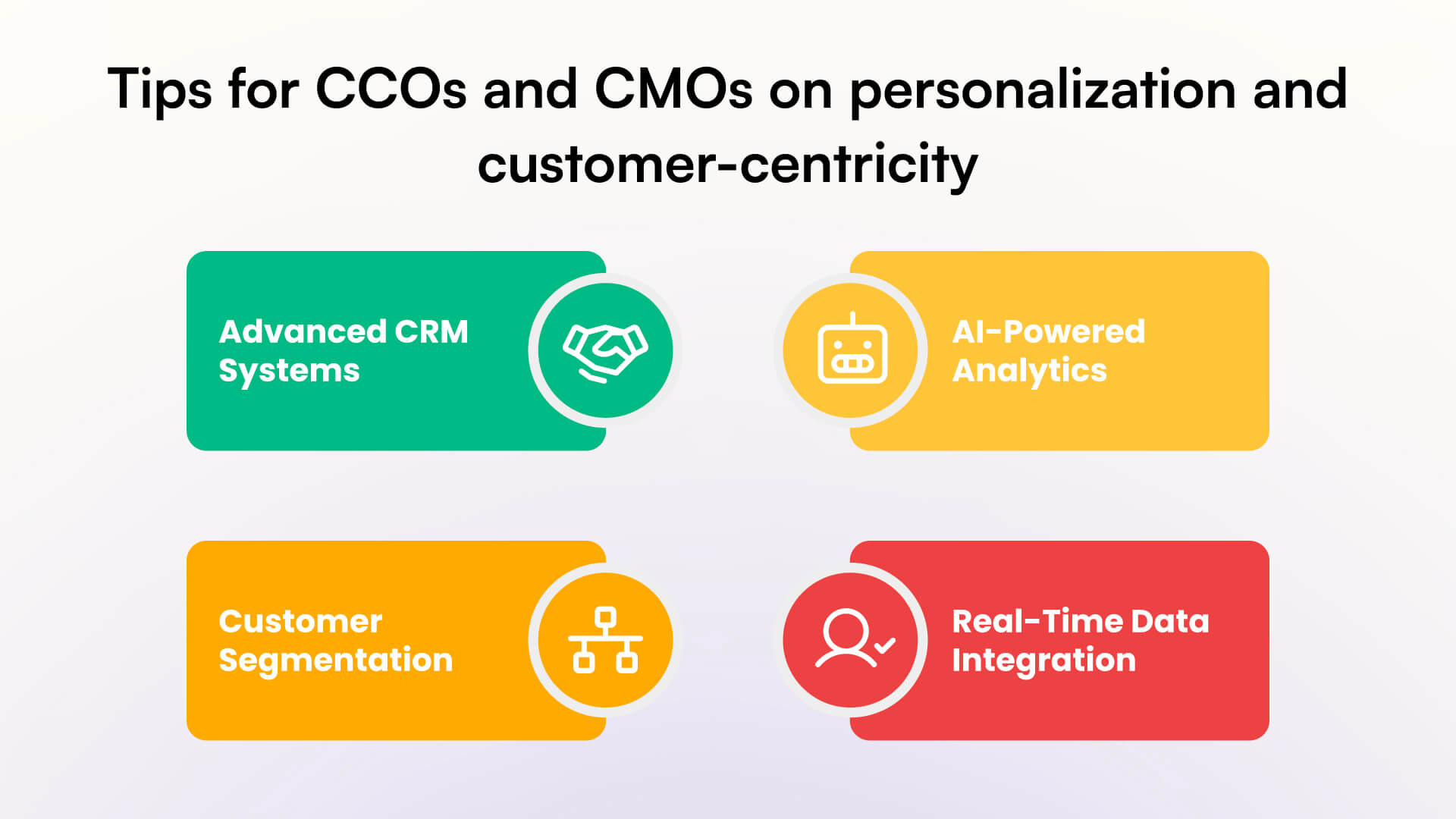
For the CCOs and CMOs:
Tips for personalization and customer-centricity:
- Advanced CRM Systems: Modern CRMs enable detailed customer profiling and preference tracking, ensuring every interaction feels personal.
- AI-Powered Analytics: Predict customer needs based on past behavior using AI and machine learning tools, enhancing your ability to offer proactive support.
- Customer Segmentation: Develop personalized communication strategies based on customer segmentation, ensuring relevant content is delivered at the right time.
- Real-Time Data Integration: Use real-time data to adjust your service approaches dynamically, ensuring your business can pivot to meet evolving customer demands.
To achieve true personalization and customer-centricity in your business, you need to consider two fronts- data and emotional intelligence (EI).
1.1 Customer data usage the right way
We live in a world that eats and sleeps data. If you’re not using data to refine your customer service, you leave insights—and dollars—on the table. Data, in particular customer data, is the foundation of a modern customer service strategy. These are golden words straight from the horse’s mouth and can transform customer interactions from reactive to proactive, setting the standard for customer service excellence.
Salesforce reports that 63% of consumers expect businesses to know their unique needs and expectations, while 76% of B2B buyers expect the same.
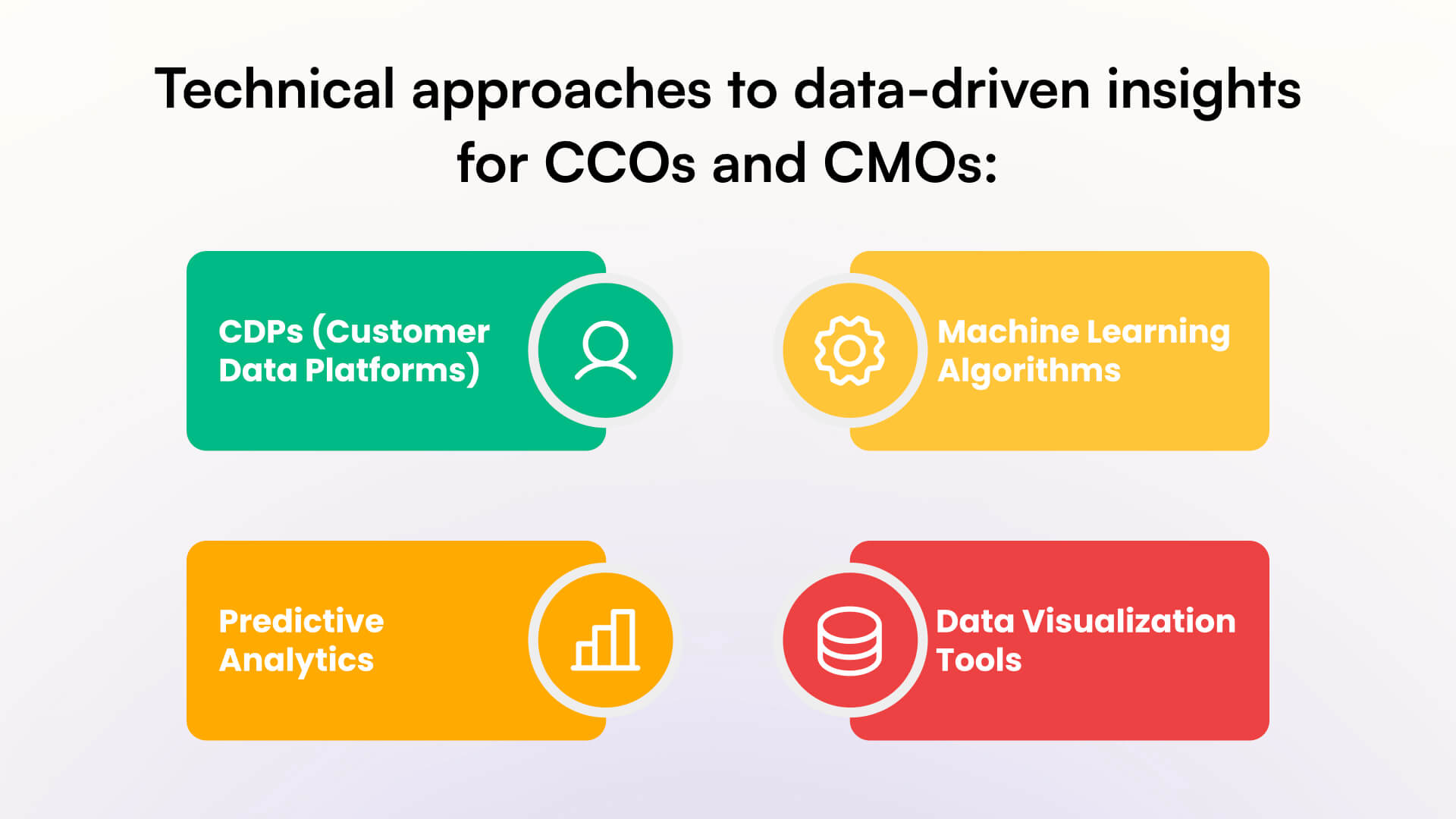
For the CCOs and CMOs:
Technical approaches to data-driven insights:
- CDPs (Customer Data Platforms): Consolidate information from multiple touchpoints, such as website activity, purchase history, and customer feedback, to create a unified profile of each customer.
- Machine Learning Algorithms: Identify patterns in customer behavior, helping your team anticipate future needs or problems before they occur.
- Predictive Analytics: Forecast future customer demands and potential issues by leveraging historical data and behavioral trends.
- Data Visualization Tools:Enable service teams to interpret and act on complex data, allowing for fast and effective decision-making.
Story time:
Let us consider the case of Jack. Jack sold his cow, and with the money, he brought a bag of magic beans from your business, MagicPortal, which deals in stuff needed for life-transforming magic.
Now, say you have a CRM (Customer Relationship Management) system and a CDP (Customer Data Platform). Once Jack becomes a customer, both systems get to work in tandem.
The CDP consolidates Jack’s data from various touchpoints—his browsing behavior, interactions, and preferences—creating a comprehensive profile of his needs. Your CRM, already equipped with Jack’s purchase history (the magic beans), leverages this data with AI-powered tools to anticipate his future needs, offer proactive solutions, and help you personalize interactions.
You’re not just responding—you’re anticipating. So, the next time you send Jack an owl suggesting the magic trowel or the magic watering can, he gets to know his needs through your business even before he realizes it.
With the right predictive AI tools, you can even address potential issues before they arise. Suppose many customers purchasing magic beans have questions about properly planting them. Your analytics tools highlight this pattern, and you create a detailed FAQ and send a hoot mail to Jack before he even asks.
Jack has an overall smooth and enjoyable shopping experience. This proactive approach makes him feel valued, turning a one-time buyer into a lifelong fan.
1.2 The human element in digital interactions: emotional intelligence (EI)
We all agree that even in this age of automation, data, and AI-powered everything, customer service is still very much a human endeavor. That’s where emotional intelligence (EI) comes in–a key differentiator in customer service excellence, allowing representatives to connect on a deeper level with customers.
Training your staff to understand not just what your customers are saying but how they’re saying it can make all the difference. EI helps your team navigate sensitive situations, defuse frustration, and create moments of connection.
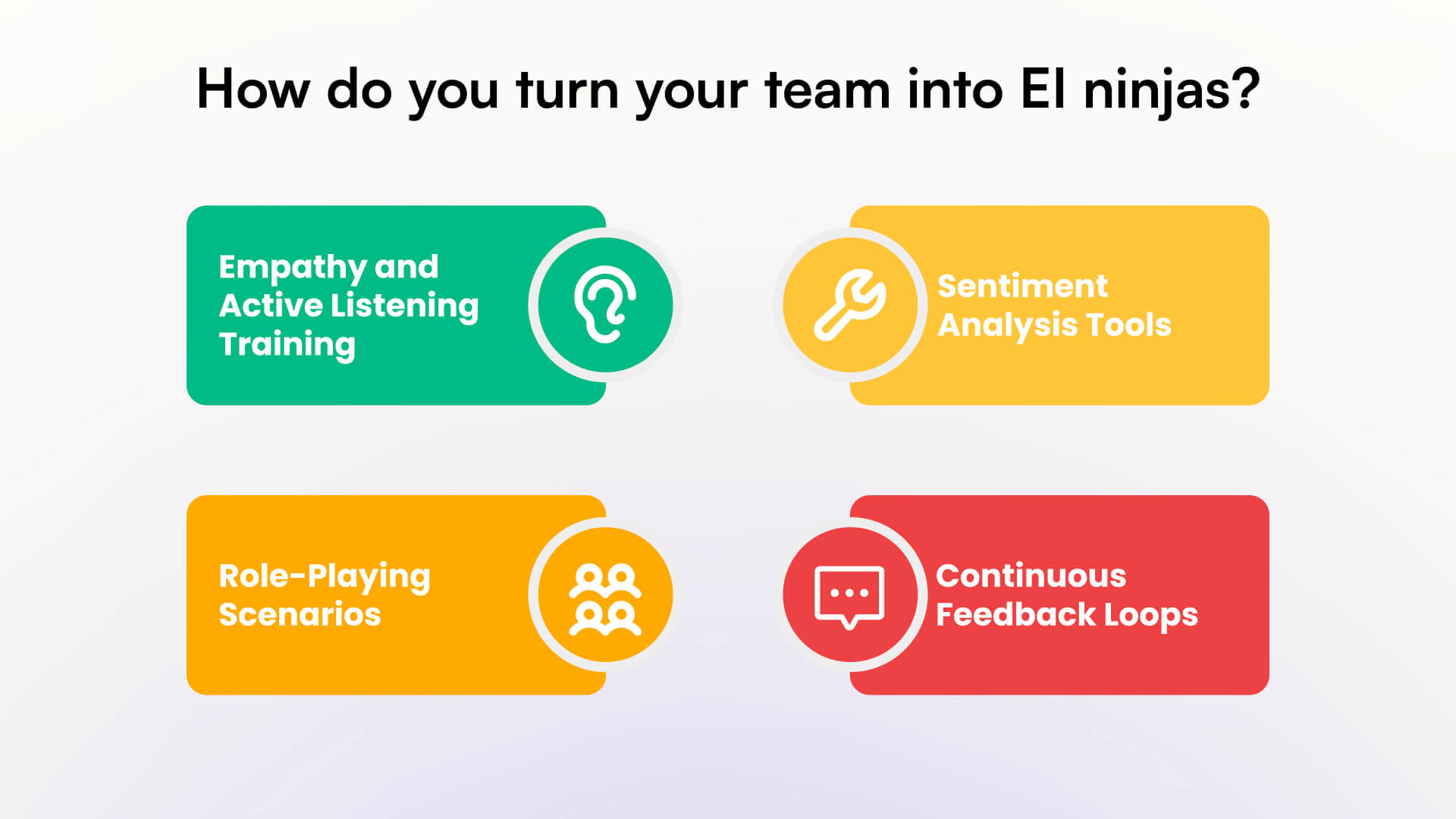
For the CCOs and CMOs:
How do you turn your team into EI ninjas?
Basic training is not enough. Move beyond problem-solving and empower your team to be emotion detectives.
- Empathy and Active Listening Training: These core skills help customer service teams navigate even the most emotionally charged situations.
- Sentiment Analysis Tools: Use AI-powered tools to gauge customer emotions during interactions and tailor responses based on the detected sentiment.
- Role-Playing Scenarios: Incorporate role-playing into your team’s training, practicing real-world scenarios to strengthen EI.
- Continuous Feedback Loops: Implement systems for collecting feedback and improving your team’s emotional intelligence skills.
By developing EI in your team, you’ll ensure they can handle sensitive situations and create lasting connections—transforming everyday interactions from transactional to transformational. Oracle research found that 70% of emotionally engaged consumers spend up to two times or more on brands they are loyal to, compared to less than half (49%) of consumers with low emotional engagement. That’s not just customer service; that’s customer loyalty gold.
Story time:
Jill is one of the top service agents for your store, which sells pails of wood and metal. One fine morning, the birds are chirping, and the sun is out, so Jill gets a call from Jack. Now, Jack is having one of those days. He’s frustrated. His latest buy, a wooden pail, arrived late, and to make matters worse, it had a broken handle. Jill could simply apologize and offer a refund—that’s customer service 101. But she does something different.
She takes a deep breath, listens to Jack’s tone, and senses his frustration of being unable to fetch water. Instead of jumping straight to an answer, she acknowledges his feelings, “I hear how frustrating this must be for you, Jack. I understand you cannot fetch your pail of water from atop the hill with a broken handle. Let’s sort this out together.”
Jack feels heard. His shoulders relax. Jill doesn’t just solve his problem—she turns his bad experience into a story of exceptional service. That’s the magic of EI in action.But Jill didn’t just wake up with superhuman empathy. No, her EI skills were honed through training.
- If your customer service game is lacking the personalization effect, Thinkstack can be the right partner for you. Try out the easy-to-use and free AI chatbot maker to build a bot for your customer service excellence needs.
2. Meeting customers their way: omnichannel support
Today’s customers are everywhere: email, social media, live chat, phone calls, and even SMS. HBR surveyed 46000 shoppers and found that 73% of the population prefer multiple channels for shopping. Your customers expect you to be there, no matter how or where they reach out. No longer do “We’ll get back to you via email in 3-5 business days” messages work. Now, if your customers have a question, they expect an answer as quickly as possible.
Moreover, they desire the same top-tier experience, whether chatting online or talking to your team on the phone. All strategies for serving your customers the right way shine the brightest when they’re integrated into one seamless system. Consistency is your secret weapon, i.e., omnichannel support butts its way in.
Now, there is a prominent difference between using multichannel and omnichannel support systems. Multichannel, as the name suggests, is customer engagement within multiple channels or platforms. Omnichannel, on the other hand, is customer engagement across multiple platforms with a focus on comprehension and consistent brand experience everywhere.
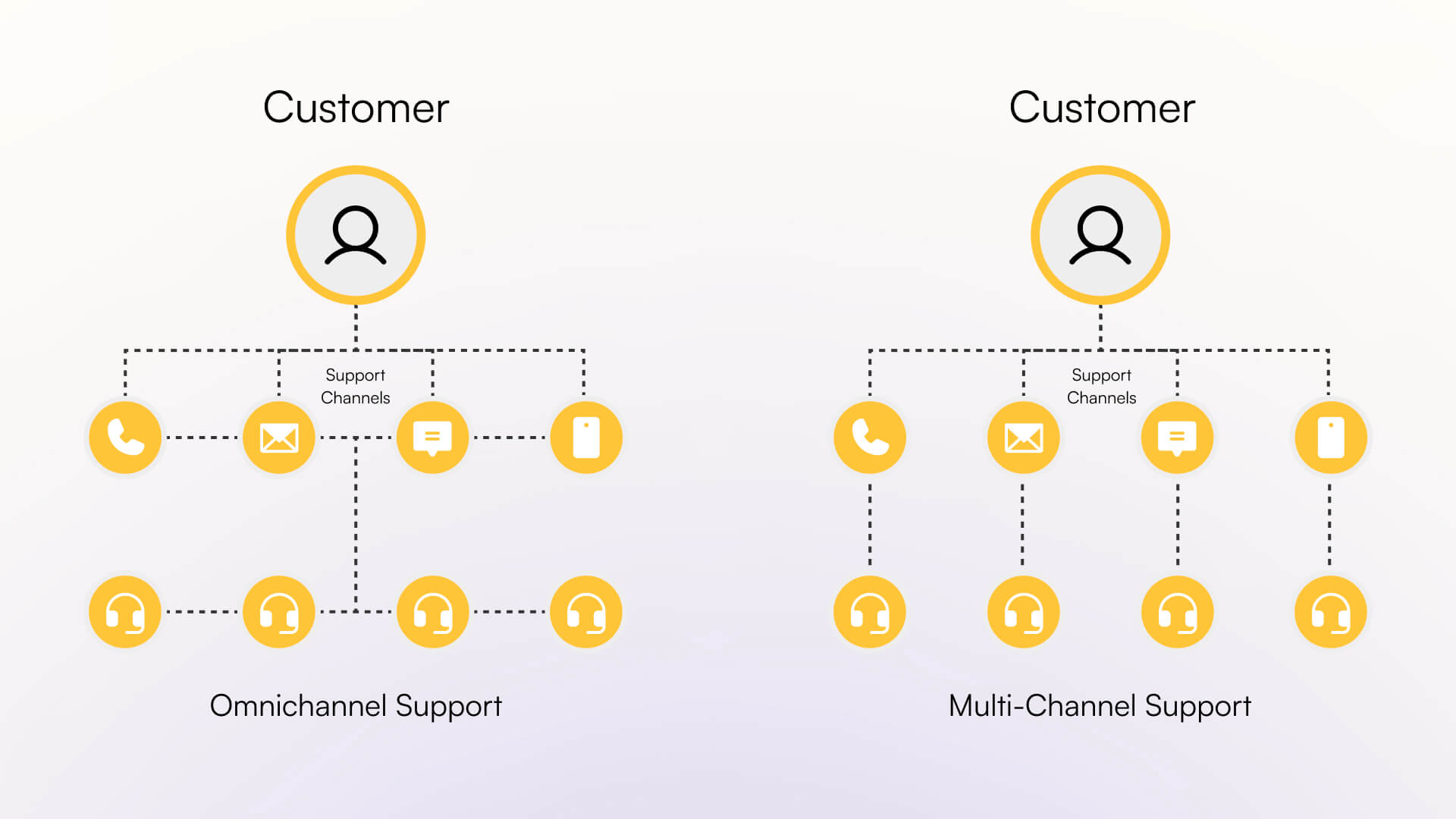
Omnichannel marketing campaigns have a 250% higher purchase and engagement rate than single-channel campaigns. (RetailDive)
Imagine a visitor starts a conversation with your team on Facebook, then hops over to live chat for a follow-up on a question he has on your payment policy, and then gives your team a call to place the order and wrap it up. Omnichannel support means your team will know his full story without missing a beat. No more awkward, “Sorry, what’s your issue again?”
When you are everywhere your customers are, you have mastered the art of being in two places at once—but without the sci-fi magic, and it is key to mastering customer service excellence.
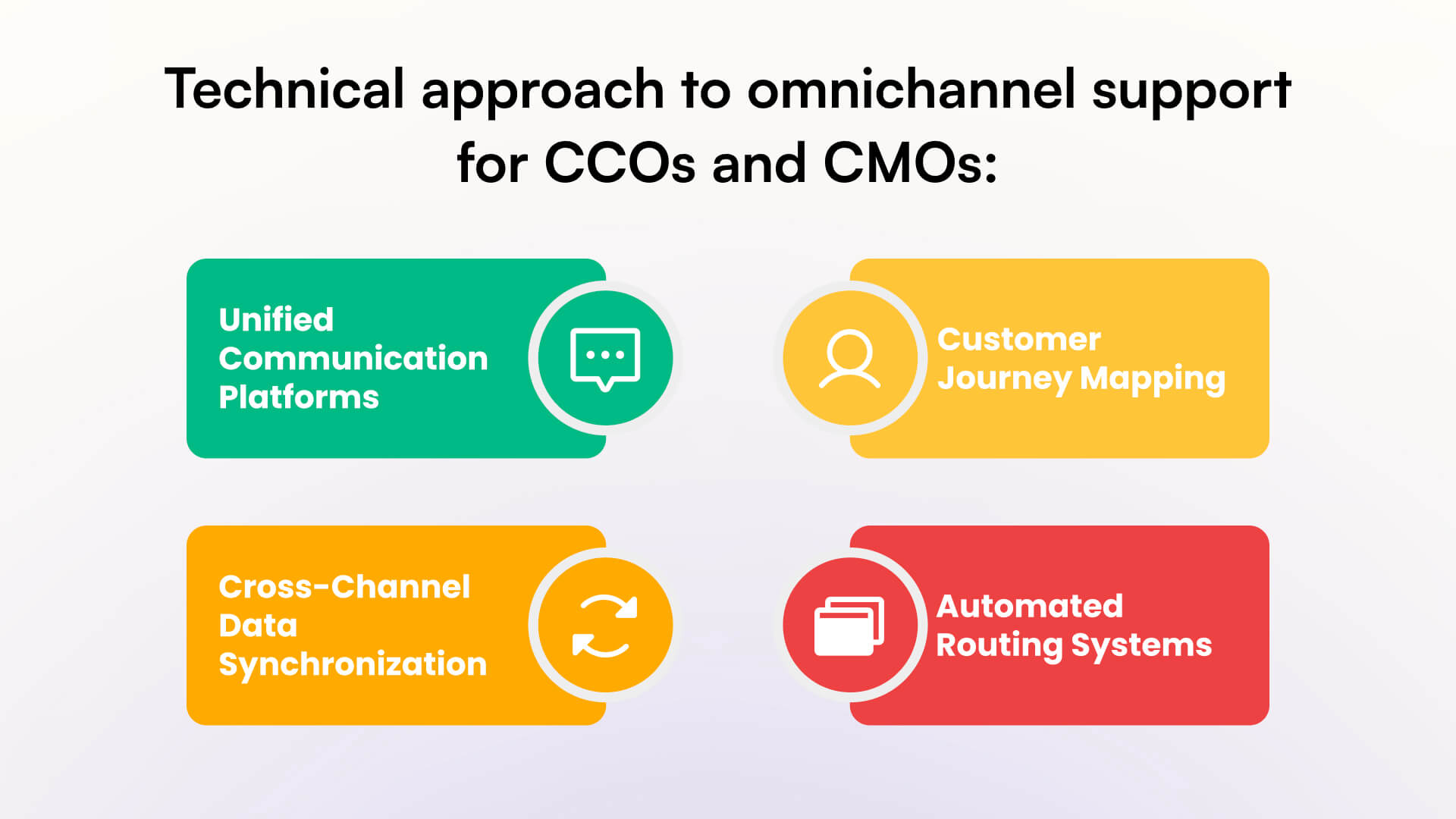
For the CCOs and CMOs:
Technical approach to omnichannel support:
- Unified Communication Platforms: Integrate multiple communication channels (email, social media, live chat) into a single interface for easier management.
- Customer Journey Mapping: Track interactions across various touchpoints to create a seamless and connected experience.
- Cross-Channel Data Synchronization: Ensure consistent information across platforms so that every team member can access the same customer data.
- Automated Routing Systems: Automatically route customer queries to the most appropriate agent or channel based on their needs.
Integrating all customer touchpoints might seem like a Herculean task. But here is the deal: it is worth it. When your data and systems talk to each other, your team can provide faster, more accurate responses, which leads to higher customer satisfaction.
3. Self-Service: empowering your customers
Studies have found that customers prefer to get help for their issues from two main channels — a human agent or themselves. According to HubSpot’s report interestingly, despite the advancements in customer service through human agents, 28% of consumers would rather solve problems independently.
Let’s be real: sometimes, customers want to help themselves. It is more of a DIY situation, like assimilating an IKEA bookshelf from scratch. Customers like it when they have the power to sort out their issues. Today, customer service excellence often means giving your customers the tools to solve their problems.
That’s where self-service comes in. Interactive knowledge bases, AI-driven troubleshooting guides, and detailed FAQs are all game-changers. Tidio reports that 62% of users prefer interacting with a customer service chatbot rather than waiting for a human agent’s response. Self-service is not just efficient; it is empowering.
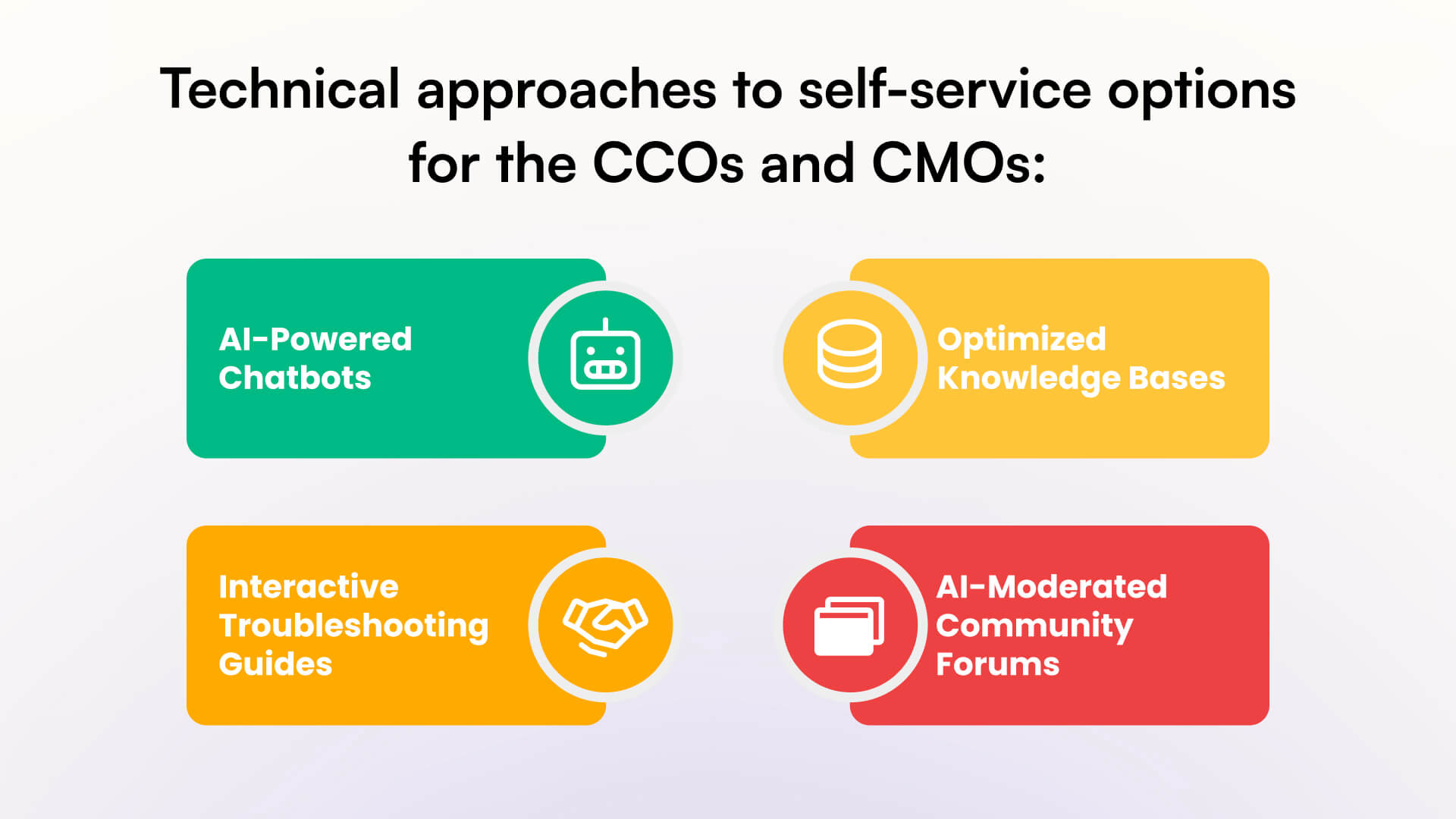
For the CCOs and CMOs:
Technical approach to self-service options:
- AI-Powered Chatbots: Use AI-powered chatbots to handle basic inquiries and guide customers through simple processes, reducing response times and boosting satisfaction.
- Optimized Knowledge Bases: Leverage natural language processing (NLP) in your knowledge base to make searching for answers quicker and easier.
- Interactive Troubleshooting Guides: Decision trees and interactive guides help customers resolve issues without human support.
- AI-Moderated Community Forums: AI moderation ensures that community forums provide accurate and helpful responses, enhancing user trust and satisfaction.
Take a leaf from Amazon’s book: their self-service model allows customers to resolve most issues without speaking to a human. It’s the same idea for your business. The easier you make it for customers to find their solutions, the happier (and more loyal) they’ll be.
A case for customer service excellence
XYZ is a sales automation software provider. In a market saturated with solutions for every conceivable problem, only a few stand out. XYZ is one such company, excelling through its forward-thinking approach to customer service.
What makes XYZ stand out?
XYZ values its customers and is renowned for providing personalized, efficient self-service experiences. One standout feature is that 75% of its premium support is automated, allowing customers to solve most issues independently and in real-time.
Is that too good to be true?
Not at all. XYZ has implemented an AI-powered conversational chatbot on its website, which enables customers to resolve their inquiries instantly. Whether answering common questions or guiding users through troubleshooting, the chatbot empowers customers to help themselves. With minimal human intervention required, XYZ’s chatbot enhances customer satisfaction while maintaining the personalized touch that customer service excellence demands.
- Related reading
Learn how to build an AI chatbot for enhanced self-service options.
AI and ML in Customer Service Excellence: The Future is Now
As we move deeper into 2026, the demand for excellence in service is driving innovation at an unprecedented pace. AI is no longer a futuristic concept; it has become the backbone of modern customer service, pushing the boundaries of how businesses support their customers.
Let us consider a situation where an custom AI chatbot pops in to answer a customer’s routine question about shipping policies. But what if that customer’s query is a little more complicated? No worries, AI knows when to pass the baton to a human. They are like the ultimate tag-team duo. The bot does the heavy lifting with simple questions, and your team steps in during crunch time. This blend elevates customer service to new heights and meets the demand for customer service excellence.
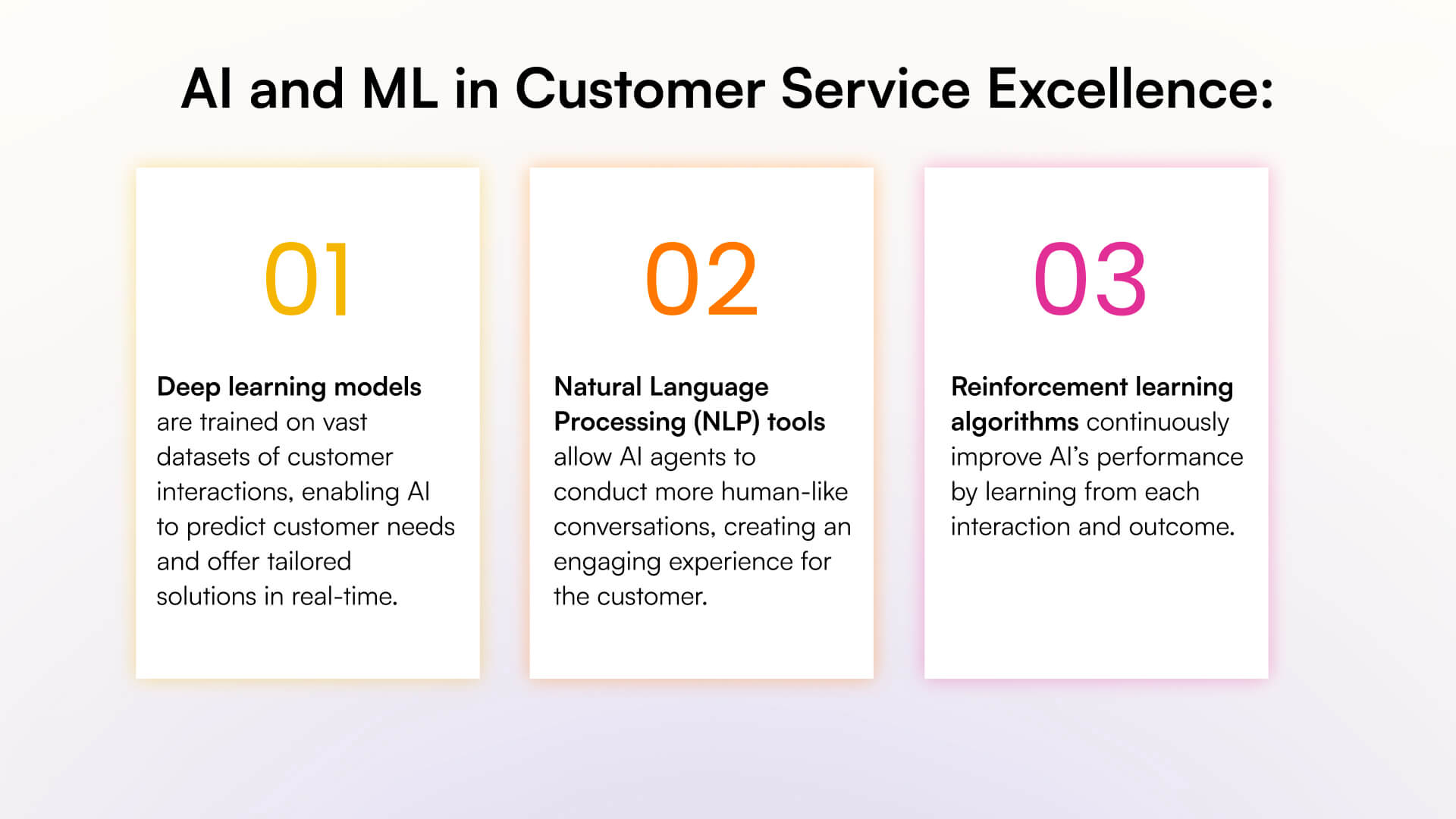
Technical innovations
- 1. Deep learning models are trained on vast datasets of customer interactions, enabling AI to predict customer needs and offer tailored solutions in real-time.
- 2. Natural Language Processing (NLP) tools allow AI agents to conduct more human-like conversations, creating an engaging experience for the customer.
- 3. Reinforcement learning algorithms continuously improve AI’s performance by learning from each interaction and outcome.
It turns out that business leaders believe AI helps boost human intelligence, and 81% plan to embed AI into tools their agents already use in the next year. (Zendesk). The future is here, folks.
Natural Language Processing (NLP)
Modern chatbots no longer sound robotic and frustrating. NLP is making AI interactions smoother and more intuitive, pushing the envelope of customer service excellence. Now, conversations that feel human, natural, and empathetic.
Dashly conducted interviews with companies that use chatbots and found that 50% of customers like to talk with AI chatbots.

Technical innovations
- Sentiment analysis within NLP detects customer emotions and allows AI to adjust its tone and responses in real-time, enhancing the customer experience.
- Entity recognition identifies crucial details in customer queries—like names, order numbers, or locations—so the system can offer faster and more accurate solutions.
- Advanced language models such as GPT are fine-tuned to specific customer service contexts, enabling AI to deliver more relevant, helpful responses tailored to each business.
- Multilingual NLP AI-Moderated Community Forums: eliminates language barriers, offering customer support in multiple languages without human translation—further solidifying customer service excellence across diverse global markets.
- For your business: NLP-powered chatbots foster a responsive and engaging customer experience, driving long-term satisfaction and loyalty. Thinkstack offers a free GPT-powered chatbot to meet your needs, featuring options like GPT-3.5 Turbo, GPT-4o Mini, GPT-4o, and GPT-4 Turbo. Each model enhances your chatbot's ability to understand and respond naturally to human language.
How much of customer service should be automated?
While AI has proven effective in handling routine tasks, there will always be moments when a human touch is needed. The key to customer service excellence is striking the right balance between automation and human interaction.
For example, while an AI-powered chatbot may help a customer track their order, it’s the human agent who steps in with empathy and problem-solving skills when an issue arises. This seamless transition between machine and human ensures both satisfaction and efficiency.
The key is knowing when to leverage AI and when to bring in the human team, keeping customers happy, and maintaining operational efficiency.
Check out: How B2B customer service is evolving with proactive tools, automation, and CX strategies.
Are your Customer Service Excellence Strategies Working: Metrics and KPIs
Achieving customer service excellence is an ongoing journey. You need a solid set of KPIs to assess how well your service aligns with customer expectations. Here are the three most important KPIs to track: CSAT, NPS, and CES. This is probably because these metrics are easy and quick to implement and track. They need less effort, are simple to understand, and are straightforward.
1. Customer Satisfaction Score (CSAT):
The CSAT score measures the immediate satisfaction of your customers after interacting with your service. Typically, this is calculated by asking, “How satisfied were you with your experience today?”
Customers rate their experience on a scale (e.g., 1-5 or 1-10).
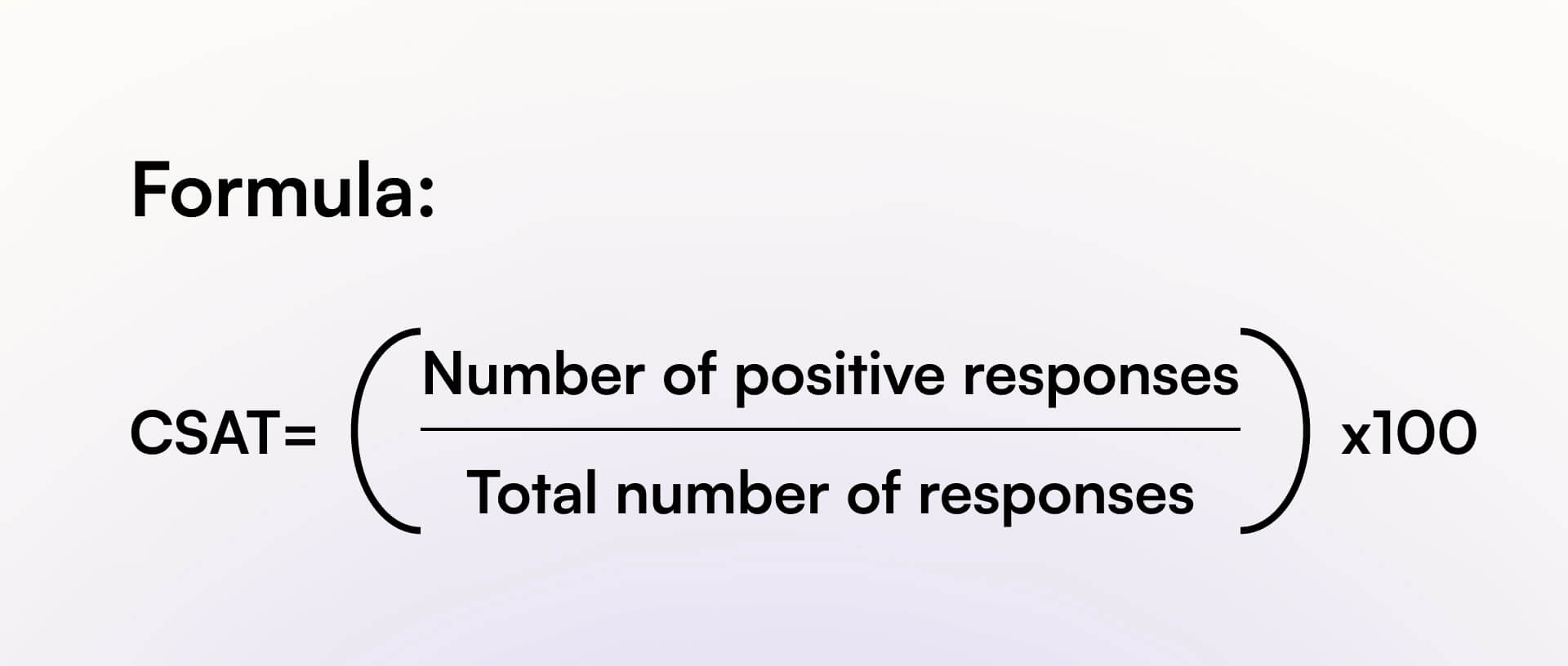
For example, if you receive 75 positive responses out of 100 surveys, your CSAT score will be:
CSAT = (75 / 100) * 100= 75%
A high CSAT score means you’re meeting or exceeding customer expectations. CSAT surveys aren’t limited to a single question. If you want, you can use multiple queries and have open-ended and closed-ended questions in the same study.
2. Net Promoter Score (NPS):
NPS measures customer loyalty and reflects how likely your customers are to recommend your business to others. It’s calculated based on one key question: “How likely are you to recommend our service to a friend or colleague?”
Customers respond on a scale of 0-10, and they’re grouped into three categories:
- Promoters: 9-10 (who love your company and will actively promote it)
- Passives: 7-8 (who like your company but don’t love it yet)
- Detractors: 0-6 (who are unhappy with your company and are at risk of churning)

For example, if 70% of your respondents are Promoters and 20% are Detractors, your NPS score will be:
NPS = 70 - 20 = 50
A high NPS suggests your customers are loyal and likely to become advocates of your brand. NPS is gathered through short and easy surveys that can be sent during any stage of the customer lifecycle through various channels – email, web, or even text messages.
3. Customer Effort Score (CES):
CES measures how easy it is for your customers to resolve their issues. The lower the score, the better, as this means customers find your processes straightforward and efficient.

For example, if 80 customers rate the effort needed to solve their issue on a scale of 1-5, and the total score is 244, your CES will be:
CES = 244 / 80 = 3.05
A low CES indicates that your customers find it easy to interact with your service, leading to better customer retention and satisfaction. CES surveys generally use a single question to ask clients how easy or difficult it is to perform a certain action, such as getting help from the support team, buying a product, or leaving a review.
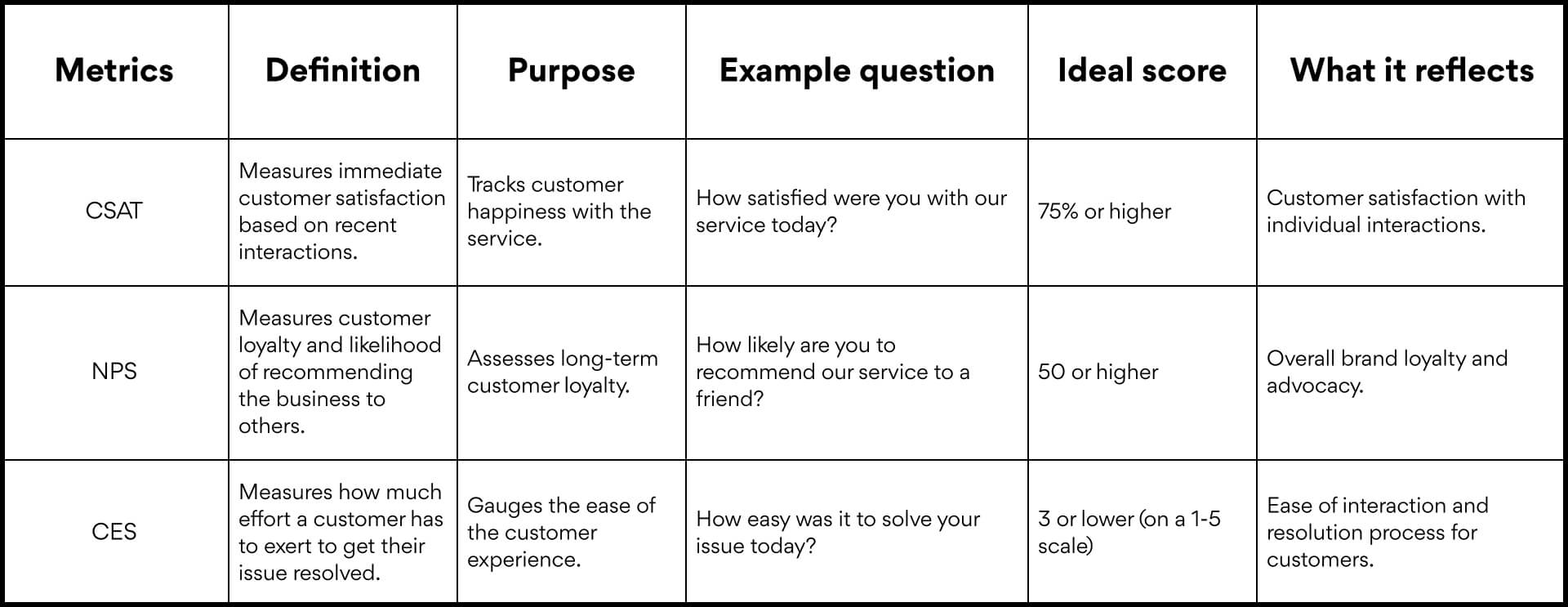
Why do these metrics matter for CCOs and CMOs?
- 1. CSAT tells you how happy customers are immediately after interacting with your business. This short-term measure can help you fine-tune specific service processes
- 2. NPS goes beyond satisfaction; it highlights loyalty. Customers who rate your service highly are likely to return and refer others, a key to sustainable growth.
- 3. CES ensures you’re making it easy for customers to do business with you. Low effort translates to higher satisfaction, which means less churn and more retention.
Regularly reviewing these metrics allows you to create a comprehensive picture of customer experience, balancing immediate feedback (CSAT), long-term loyalty (NPS), and ease of service (CES). You’ll be able to spot potential pain points, resolve issues proactively, and keep your customers coming back for more.
How Thinkstack can help CCOs and CMOs Achieve Customer Service Excellence
Traditional customer service models rely on the 4 Cs:
- Customer-Centricity: Putting your customers at the center of every decision, ensuring their needs are understood and met.
- Communication: Clear, responsive, and consistent communication that builds trust with customers.
- Consistency: Extending the same experience across every customer touchpoint, from emails to phone support to in-person interactions.
- Customization: Personalizing experiences for each customer’s unique preferences and behaviors.
However, today, the challenge is not just mastering these 4Cs but doing so at scale. This is where technology steps in, offering solutions that can automate, enhance, and transform how businesses engage with customers.
Forget the 4 Cs: the only C you need for customer service excellence
Thinkstack simplifies the predicament of handling 4 Cs separately and unifies it into just one C. C for Chatbots.
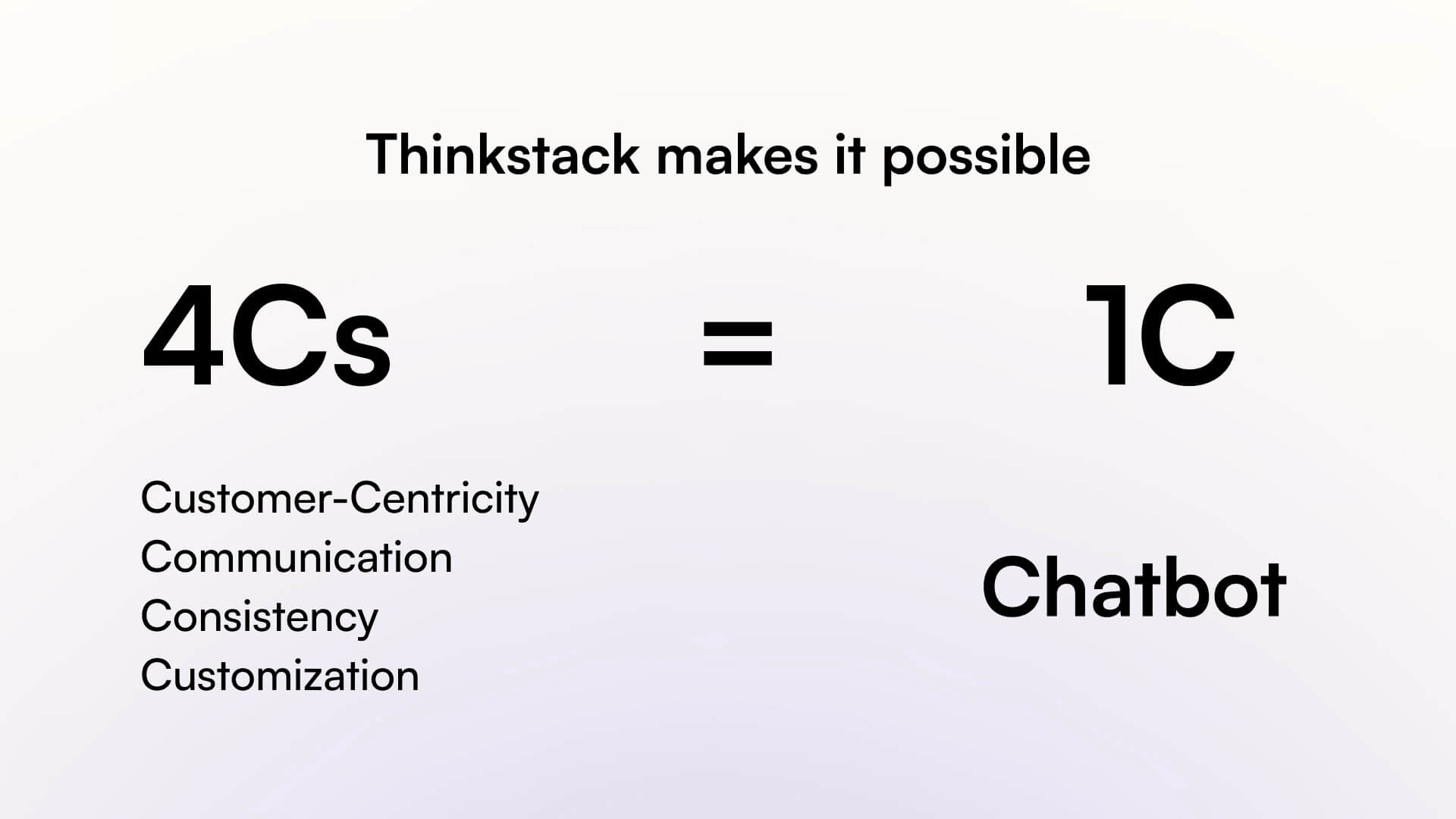
Thinkstack-powered chatbots have features designed to personalize interactions, predict customer needs, and reduce friction in the customer journey (from initial inquiries to post-purchase support), ensuring your business achieves customer service excellence effortlessly. Thinkstack chatbots offer:
- AI-Powered Personalization: Thinkstack’s chatbots are powered by the latest GPT models and designed with advanced NLP and contextual understanding capabilities to assess user intent, offer proactive choices, and respond like humans. This makes customer interactions feel personal and boosts customer engagement.
- Seamless Omnichannel Integration: Thinkstack chatbots work across platforms— social media, websites, and apps—ensuring your brand remains consistent and accessible. This omnichannel support is a critical part of delivering customer service excellence in today’s multi-touchpoint world.
- Cost-Effective Scalability: One of the greatest advantages of Thinkstack chatbots is that they can handle thousands of customer interactions simultaneously without expanding human resources. By taking over repetitive tasks, Thinkstack chatbots identify and hand over complex issues to human agents when necessary, ultimately increasing operational efficiency.
With Thinkstack, you get a system that not only automates key customer service functions but also enhances the customer experience by anticipating needs, solving issues proactively, and creating meaningful interactions.
For CCOs and CMOs: Retrospection on one’s Customer Service Scene
Here’s the bottom line: customer service excellence is no longer a department. It is the foundation of your business strategy. The sooner you embrace this reality, the quicker you’ll see growth.
To start, conduct an audit of your current customer service practices. Ask yourself:
- Are we solving customer problems on the first try?
- How are we using automation to free up human resources for high-impact issues?
- Are our customer service reps trained to prevent problems, not just solve them?
- How can we streamline our service processes using one powerful solution instead of juggling multiple strategies?
- Are we leveraging AI and chatbots to deliver proactive, customized experiences?
- Is our chatbot doing enough for the business?
Last but not least, ask yourself: Are we ready to make that shift to up our customer service game this season?
Once you’ve answered these questions, you’ll have a clearer path forward.
TL;DR
Businesses that master customer service don’t just survive; they thrive. In 2026, customer service excellence has become the new business differentiator. Here’s why it matters:
- Customer service is not just about fixing issues but about creating and maintaining systems that place customers at the center of the entire service cycle.
- Great service ripples through every facet of your business, affecting everything from brand loyalty to employee morale.
- Customer retention is more cost effective than acquisition, making it a priority for sustainable growth.
- Customer-centricity and personalization are crucial components of customer service excellence in 2026.
- Data-driven insights enable businesses to tailor service strategies, anticipating customer needs and preferences.
- AI and machine learning are revolutionizing customer interactions and automating routine tasks while improving personalization
- Omnichannel support ensures seamless experiences across all platforms, creating consistent engagement.
- Balancing customer service automation with the human touch is a challenge, but it can be mastered with proper training of both AI systems and human agents.
- The traditional 4 Cs of customer service—Customer-Centricity, Communication, Consistency, and Customization—are now old news. Today, businesses can substitute them with one C—Chatbots—to thrive. AI-powered chatbots provide the scalable, efficient solution that businesses need to achieve customer service excellence.
- CCOs and CMOs need to commit to actionable strategies for improving customer service excellence, from leveraging AI-driven chatbots to tailoring services based on data insights, ensuring every customer feels valued at every touchpoint.
Frequently Asked Questions (FAQs)
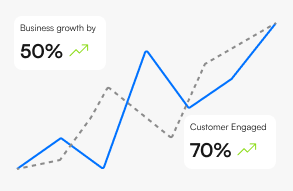
Grow Your Business with AI Agents
- Automate tasks
- Engage customers 24/7
- Boost conversions